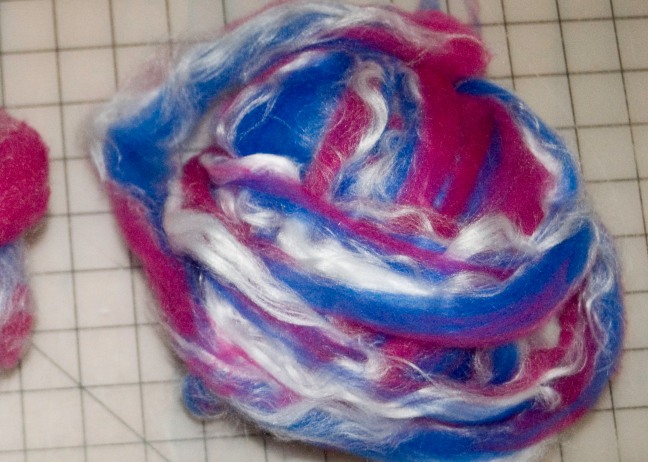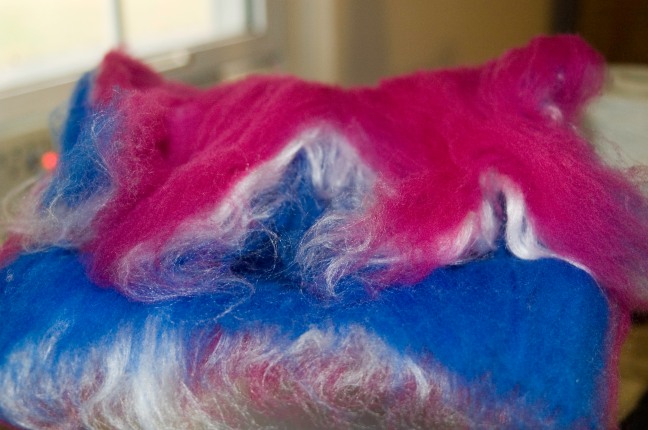Going on to part two of my Batt Experiments. In my last post I discussed the technique of making a layered batt, then tearing it into strips and putting the strips back through the drum carder on edge to make a striped batt. I then removed the batt as a roving by pulling it through a diz, going back and forth across the width of the carder. I showed the resulting roving, and the resulting singles on the bobbin, and talked about how they didn’t turn out the way I’d expected due to some unwise fiber choices.
 This is part two, where I kept the batt in layers, tried to maintain a little more control over the bamboo by applying it directly to the drum rather than going through the feed tray, and again removing the batt as a roving by pulling it off through a diz, going back and forth across the width of the carder.
This is part two, where I kept the batt in layers, tried to maintain a little more control over the bamboo by applying it directly to the drum rather than going through the feed tray, and again removing the batt as a roving by pulling it off through a diz, going back and forth across the width of the carder.
 As with the striped batt, the roving came off looking more-or-less the way I’d expected it to. When you diz off a striped batt, you should get all the colors in all the layers distributed fairly evenly along the roving. Theoretically, this should give you a single that also has all the colors in all the layers distributed evenly along the length of the single.
As with the striped batt, the roving came off looking more-or-less the way I’d expected it to. When you diz off a striped batt, you should get all the colors in all the layers distributed fairly evenly along the roving. Theoretically, this should give you a single that also has all the colors in all the layers distributed evenly along the length of the single.
 Again, as with the striped batt, the bamboo bit me in the posterior. The slipperiness and tendency to clump together made the bamboo draft in long sections. This time I ended up with a single that had blue and magenta segments interspersed with mostly white bamboo segments.
Again, as with the striped batt, the bamboo bit me in the posterior. The slipperiness and tendency to clump together made the bamboo draft in long sections. This time I ended up with a single that had blue and magenta segments interspersed with mostly white bamboo segments.
The final results of this round: Even though the dizzed rovings from each batt looked the way I expected them to, the fiber choice impacted the way the rovings drafted to the extent that the appearance of the singles was almost opposite of what I had expected.
Lesson learned: When trying to apply anything like a scientific method, do a better job of controlling the variables!




your batt is beautiful! I am looking forward to seeing more of your experiments!!
LikeLike
Thank you! I’m working on the next set as we speak – I hope to have them written up within the next few days 🙂
LikeLike